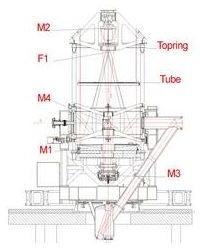How will Solar Astronomy be improved with the GREGOR and the ATST telescopes?
Solar Astronomy
The Sun is a star that is 93 million miles from earth; it takes approximately 8 minutes for the sunlight to reach earth. In fact, were the Sun to explode right now. Nothing would happen on earth for eight minutes. Then the earth would cease to exist as we know it. Because the Sun is so massive, with a diameter approximately 865,000 miles and an internal core temperature of 27 million degrees Fahrenheit, it makes observations difficult.
Solar astronomy presents its own set of problems different from night time astronomy. Since it is the brightest star that astronomers can study, the science carries over to other celestial objects and how the Sun relates to other solar systems. A great deal of solar astronomy affects how astronomers look at other objects. For example, the concept of magnitude is based in part on how much energy objects give off when measured relative to the sun.
Solar telescopes need optics large enough to achieve the best possible diffraction limit. They do not need the associated light-collecting power of other astronomical telescopes, they have more light than they can handle. The diffraction limit is the interference obtained by the electromagnetic waves as they strike an object. In this case it is the refracting telescope mirror. Solar telescopes are operated during the day so the seeing limit imposed by atmospheric turbulence is much worse than that experienced by night-time telescopes. They are picking up light and heat. Such telescopes are about 1m or under in diameter.
Spectroscopes and spectrohelioscopes are used to examine the sun in different wavelengths. A spectroscope is an instrument which measures the properties of light over a specific portion of the electromagnetic spectrum. The spectrohelioscope, on the other hand, allows the detection of sudden outbursts of activity on the sun. It is a designed to show the Sun in a particular wavelength of light. Both of these specialized tools are needed to examine the Sun.
Source: Astronomy Magazine
Problems With Solar Astronomy Observation and the Adaptive Optics Solution
Different technical problems exist in solar astronomy because of the luminosity and the large diameter of the sun. The fluctuations in the light of a bright star, scintillations, are cause by the motion across the telescope.
Daytime astronomers and nighttime astronomers face similar problems - atmospheric distortions blur the photographic images taken. It is called being “seeing limited.” The atmospheric turbulence acts as a lens that reshapes the objects that are being studied. This means that even though astronomers may be viewing an object with a large telescope, they may not have any more detail than a mid-sized telescope.
Adaptive Optics
One way to minimize the atmospheric distortion problem is to measure how much the air distorts the light and then use computers to adjust mirrors or lenses to cancel much of the problem.
Two new Solar Telescopes
In light of the difficulties presented by solar astronomy, and the technology that must be used to deal with those problems, significant efforts have been made to address these issues. Here is a partial list of some of the solar astronomy telescopes.
- The Teide Observatory hosts multiple solar telescopes
- Dutch Open Telescope (45 cm diameter)
- Mount Wilson Observatory
- Richard B. Dunn Solar Telescope (1.63 m diameter)
- Swedish Solar Telescope (1 m diameter)
- Swedish Vacuum Solar Telescope (47.5 cm diameter)
- McMath-Hulbert Observatory (24"/61 cm diameter)
- McMath-Pierce Solar Telescope (1.6 m diameter)
The two new ones under construction are the GREGOR telescope and the Advanced Technology Solar Telescope (ATST) discussed below.
The GREGOR Telescope
The GREGOR telescope is the new 1.5 m solar telescope currently assembled on Tenerife, Spain. It has three mirrors with a focal length of 50m. It is an open telescope. The main mirror is made of a silicon-carbide material (CESIC) with high thermal conduction, and it is air-cooled from the backside. This makes the adaptive optics functional.
What is it designed to do?
Gregor will be able to measure many physical parameters of the Sun at a new level of precision. It is a solar telescope designed to look at the magnetic field and the gas motion in the solar photosphere.
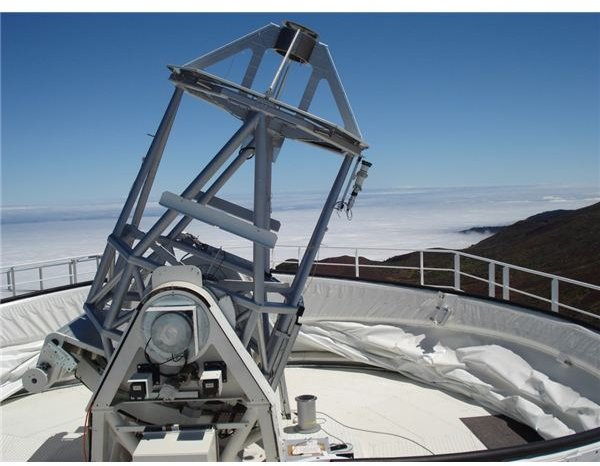
Scientists expect to gain better understanding of solar effects like eruptions or Sun spots. The scope provides a resolution of 70km on the Sun, and high resolution stellar spectroscopy.
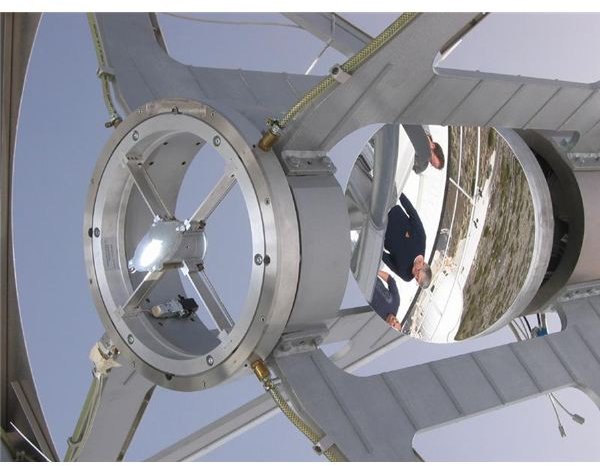
The images generated by GREGOR are sensitive to the ambient or main mirror temperatures. These temperature differences are important when studying solar images since in addition to light, high temperatures will shape the image and determine how it is distorted.
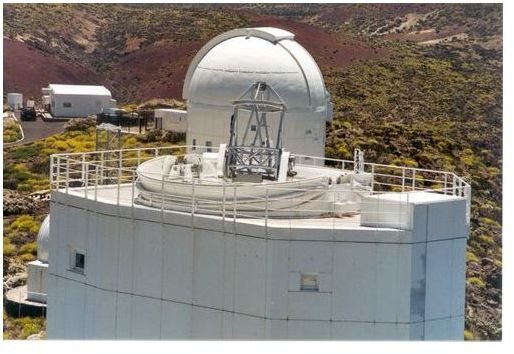
Facts about the telescope:
Location
Currently assembled on Tenerife, Spain, expected to be operational in 2010.
Instrumentation
The structure of the GREGOR telescope is open with stiff Serrurier struts and an Alt-Azimuth mounting.
1.5 m completely open telescope with a retractable dome, to avoid internal seeing.
- M2 (D=0.43m) and M3 (D=0,36m) passive cooled
- primary mirror (D=1,5m) active thermally controlled
- night time observations possible
- wavelength range from 350nm to several µm
- effective focal length: 55.6m (F/38)
- Image de-rotatornominal field of view 150" (max. 300")
- integrated adaptive optics
- light weighted optics
- Gregory configuration with additional tertiary mirror (M3)
Image source: Kiepenheuer-Institut fuer Sonnenphysik
The Advanced Technology Solar Telescope (ATST)
The ATST is a telescope that uses adaptive optics to overcome the effects of atmospheric blurring. The scope will be used to answer questions about the role cosmic magnetic fields play in plasma structures. It will also study the solar corona. The astronomers will also attempt to answer questions about solar variations and the mechanisms responsible for it. To do that the ATST telescope will provide new imagers that look beyond the electro-magnetic spectrum.

In the image above, you see how adaptive optics can enhance the image. In the first panel on the left, a solar image is displayed without adaptive optics working. In the middle panel, a low order adaptive optics technology is used, and greater detail is exhibited. In the last panel on the right, a high order adaptive optics technology gives even higher resolution and detail.

Image source
Facts about the telescope:
Location
The ATST will be placed atop the Haleakala volcano on the Pacific island of Maui, a site with clear daytime atmospheric seeing conditions.
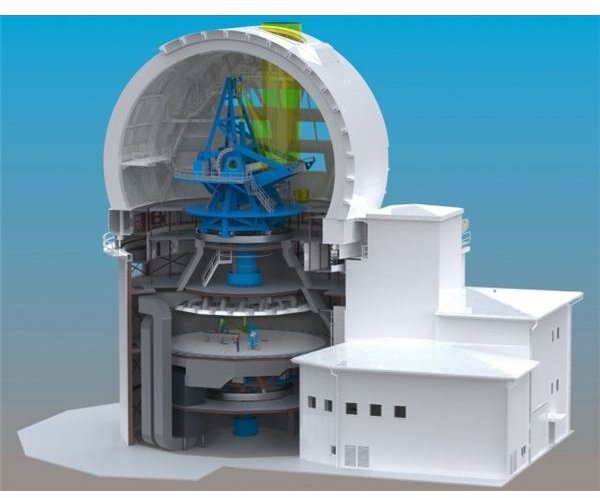
Instrumentation
There are 5 first generation instruments
- Visible Tunable Filter
- Visible Spectropolarimeter
- Near-Infrared Spectropolarimeter
- Visible Light Broadband Imager
- Near-Infrared Spectropolarimeter
There are two mirrors. The dimensions of the primary mirror are:
- Clear Aperture: 4m (13 ft)
- Diameter: 4.24m (13.78 ft)
The dimensions of the second mirror are:
- Thickness: ~50mm (1.95 in)
- Diameter: 65cm (25.35 in)
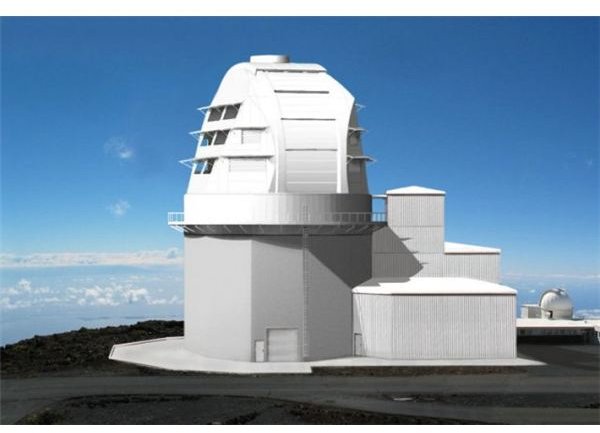
Sources
National Solar Observatory/Sacramento Peak
This post is part of the series: Modern Telescopes on Earth and in Space
In this series of articles we look at the changes in telescope design and what information they provide about astronomical objects.
